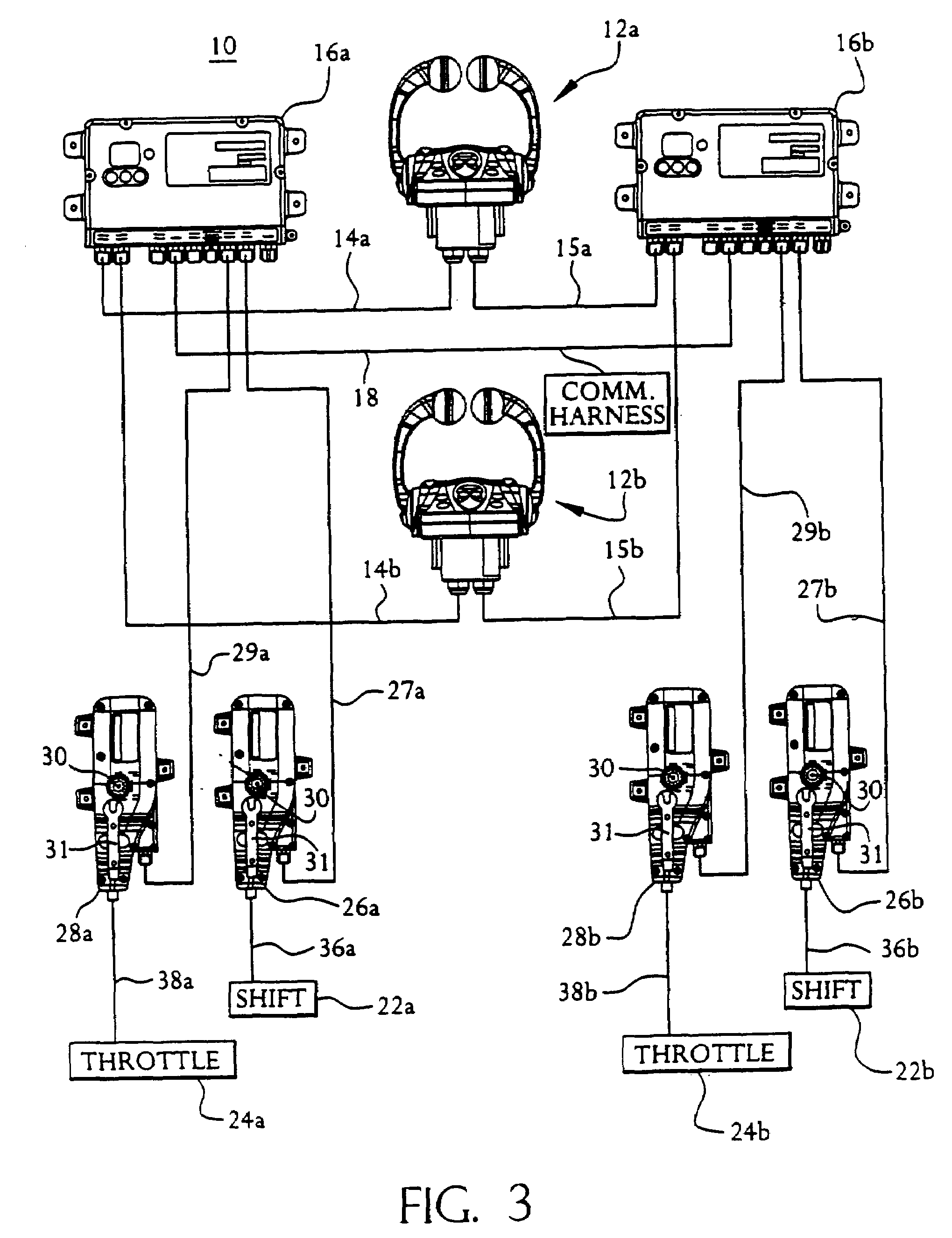Electronic control systems for marine vessels
a technology for electronic control systems and marine vessels, applied in the direction of marine propulsion, vessel construction, instruments, etc., can solve the problems of inability to provide synchronized control of the transmission, engine parts and other parts of the control system, wear and tear of the control system due to ordinary use or misuse, and achieve the effect of increasing the sensitivity of the control arm, and increasing the control over the change of throttl
- Summary
- Abstract
- Description
- Claims
- Application Information
AI Technical Summary
Benefits of technology
Problems solved by technology
Method used
Image
Examples
Embodiment Construction
Control System Overview
[0031]FIG. 1 depicts a preferred embodiment of a dual, top-mount control head 100 for controlling a marine vessel having a plurality of engines. The control head 100 includes a housing 120, a first (or port) engine control lever 102a, and a second (or starboard) engine control lever 102b. Though the control head 100 is described herein with respect to a port engine and a starboard engine, it should be understood that the control head can be adapted to control any number of engines, and that the engines need not necessarily be port or starboard engines per se.
[0032]The port control lever 102a controls the throttle of the port engine (not shown) and the shift position of the port transmission (not shown). The port control lever 102a can be rotationally coupled to the housing 120, via a port control lever rotational coupling mechanism 126a, and can include a port control lever knob 122a and a port control lever handle 124a. Similarly, the starboard control lever ...
PUM
 Login to View More
Login to View More Abstract
Description
Claims
Application Information
 Login to View More
Login to View More - R&D
- Intellectual Property
- Life Sciences
- Materials
- Tech Scout
- Unparalleled Data Quality
- Higher Quality Content
- 60% Fewer Hallucinations
Browse by: Latest US Patents, China's latest patents, Technical Efficacy Thesaurus, Application Domain, Technology Topic, Popular Technical Reports.
© 2025 PatSnap. All rights reserved.Legal|Privacy policy|Modern Slavery Act Transparency Statement|Sitemap|About US| Contact US: help@patsnap.com



